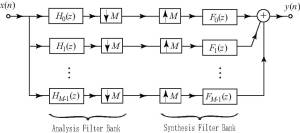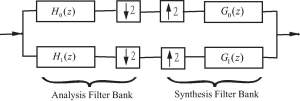In our recent paper [2], we investigate the lp-l2 problem with  . Our algorithms are built on a recent algorithm known as the MFISTA [1], where a key step of soft shrinkage is replaced by a global solver for the minimization of a 1-D nonconvex problem.
. Our algorithms are built on a recent algorithm known as the MFISTA [1], where a key step of soft shrinkage is replaced by a global solver for the minimization of a 1-D nonconvex problem.
It has been proved in [1] that for the l1-l2 problem, ISTA has a global convergence rate of  , and FISTA shares an improved complexity result of
, and FISTA shares an improved complexity result of  . We naturally explore whether a similar convergence result exists for our algorithm reported in [2]. The lp-l2 problem considered is as follows
. We naturally explore whether a similar convergence result exists for our algorithm reported in [2]. The lp-l2 problem considered is as follows
 .
.
Let  and
and  . The Lipschitz constant of the gradient
. The Lipschitz constant of the gradient  is
is  . It follows that
. It follows that
 .
.
Thus,


It can be derived that


Suppose the current iterate is  , and the next iterate is
, and the next iterate is  . By virtue of ISTA or FISTA (see [1]),
. By virtue of ISTA or FISTA (see [1]),


It is not hard to derive that


 -
-
Therefore, if we can prove


 ,
,
Then the following inequality holds



which essentially fits into the result of Lemma 2.3 in [1]. And if the inequality above holds, then the convergence proof for the lp-l2 problem follows in a same way as that of ISTA or FISTA for the l1-l2 problem.
At this point, the current problem is whether we can prove


 .
.
It can be calculated that this inequality holds if and only if


[1] A. Beck and M. Teboulle, “A fast iterative shrinkage-thresholding algorithm for linear inverse problems,” SIAM Journal on Imaging Sciences, vol. 2, no. 1, pp. 183-202, 2009.
[2] J. Yan and W.-S. Lu, “New algorithms for sparse representation of discrete signals based on lp-l2 optimization,” submitted to PacRim 2011.
,
is reached. Simply speaking, our algorithm assures that the next iterate will still be
.
and
. Define
, and
, then
,
.
.
,
.
,
.
.
.


